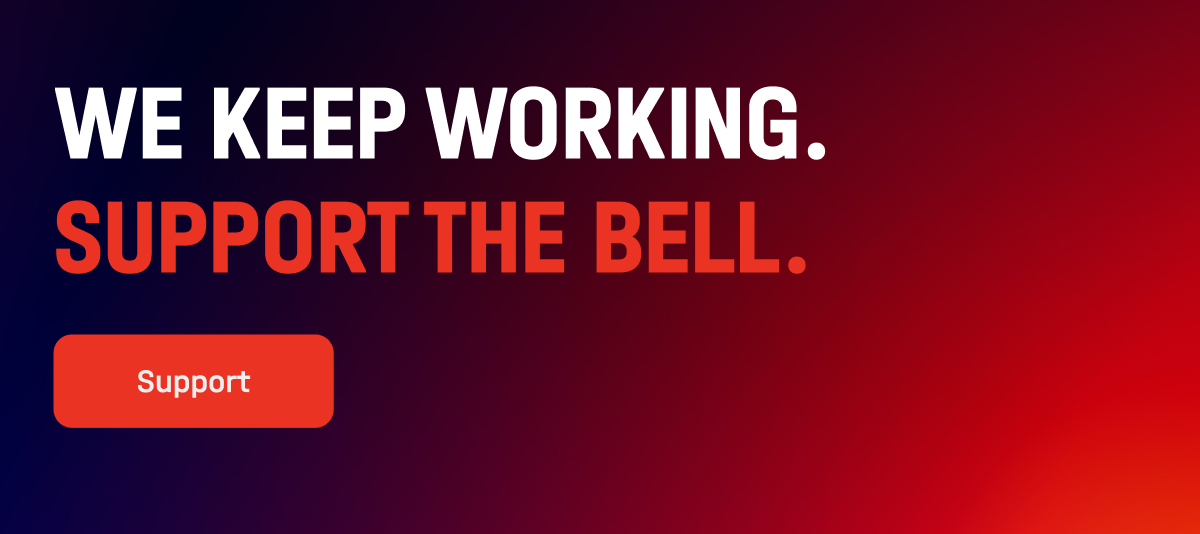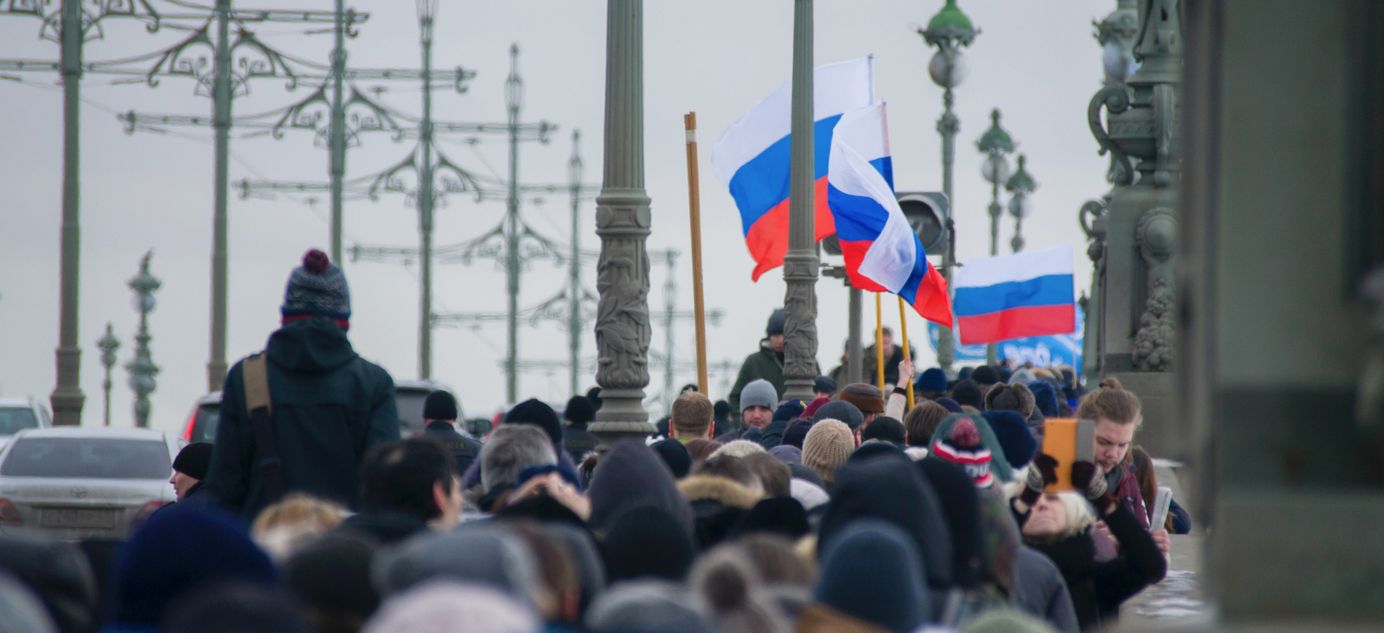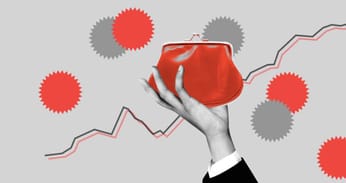
Your guide to the Russian economy

Dear reader,
Welcome to a new newsletter from The Bell. For now, we are trying this as an experiment — but we are hoping to make it a permanent feature. You can subscribe to the newsletter here. And please let us know your feedback here!
This letter is an in-depth analysis of the Russian economy, which has survived the first year of the war but is becoming ever more secretive. We will try and shed some light on what’s going on.
Each edition will tackle a part of the big question: how long can the Russian economy endure under sanctions and when will the Kremlin run out of money for its war?
The author of this newsletter is one of Russia’s leading writers on this topic: independent economic analyst Alexandra Prokopenko. Alexandra worked as an advisor at Russia’s Central Bank and Moscow’s Higher School of Economics from 2017 to 2022 — and before that she was an economic journalist for Vedomosti, then Russia’s leading business newspaper. Today, Alexandra is a columnist at the Carnegie Endowment for International Peace. She holds an MA in Sociology from the University of Manchester.
The Bell
The Kremlin likes to — euphemistically — refer to Russia’s recession as “negative growth.” And Russian propaganda does its best to hide the country’s mounting economic problems caused by Putin’s war with Ukraine, which looks set to cause a decade or more of decline. But in this newsletter, I aim to provide an honest assessment of what is happening to the Russian economy and Russia’s international economic and political influence. I’m honored to have this chance to share my economic analysis with such a great audience and will do my best to make this newsletter interesting and useful.
How can you analyze the Russian economy amid data censorship? A guide
Fearing the consequences of sanctions, Russia last year shut the country off from the outside world. They classified so many important economic statistics that observers and analysts now face a major challenge: how to evaluate Russia’s economic performance without most of the essential data? However, not all the figures are classified and there are still ways to understand what’s really happening. In this newsletter, we’ll take a look.
What’s going on?
In addition to military censorship, Russia last year imposed restrictions on the release of economic statistics, removing an unprecedented amount of data from public view. First to go was information about international reserves, then the Customs Service and the Central Bank ceased publishing trade data. Next, we lost numbers on the export and transportation of energy resources (primarily oil and gas). Among other key indicators, figures about electricity production were suppressed. Banks were no longer obliged to disclose their balance sheets and state companies (and many private ones) were permitted to conceal information about management structures and transactions. Finally, the Finance Ministry ceased publishing detailed data on the national budget.
This secrecy was triggered by Western sanctions in the wake of Russia’s invasion of Ukraine. “The less they know, the harder it is for them to impose sanctions,” one official told The Bell in the spring. But there was a second, equally important reason: reports of economic strife were alarming ordinary people. It’s one thing to watch the war on TV, where state propaganda calls the shots. It’s quite another to see its impact in your refrigerator, or on the supermarket shelves, as prices rise and goods disappear. When familiar items are no longer available, and the news mentions problems with imports due to the war, the average Russian is at risk of coming to the “wrong” conclusions. Vladimir Bulavin, head of the Federal Customs Service, made no secret of the fact that trade statistics were hidden “to avoid inaccurate estimates, speculation and discrepancies in import deliveries.”
This statistical censorship makes analyzing Russia’s economy much harder than before the war. However, it remains possible. The authorities are still publishing a significant amount of data, and have not yet resorted to falsifying the numbers.
Prices
Prices are the most reliable guide to the economy: particularly the dynamics of retail prices, the levels of return on public debt (determined by the market) and exchange rates. The State Statistics Service (Rosstat) and the Central Bank are responsible for publishing this data and there is no indication yet of any creative accounting. “Complaints about Rosstat are to do with publication schedules, completeness and availability; we have not heard professionals complaining about intentionally misleading estimates,” said Alexander Isakov, Bloomberg Economics’ head economist for Russia and the CIS.
When it comes to the consumer retail market, we can use retail turnover figures. However, the dynamics of consumer spending — in the midst of significant changes to a large group of goods and services — is better observed when supplementing this data with other indicators. Among these alternatives is Sberindex, which was set up during the pandemic. For example, Sberindex made it clear how Russian consumers react to alarming events and reports of mobilization: demand and consumption declined. Isakov said that retail has remained stagnant since the spring. Russians may feel more confident, but they are in no hurry to spend more. Persistent rumors of a second wave of mobilization will dampen sentiment, according to analyst Yevgeny Suvorov’s MMI Telegram channel.
What to look at:
- Weekly and monthly figures from Rosstat
- Central Bank estimates for inflation trends, assessments of consumer price dynamics and analytical comments about inflation in the regions
- The weekly Sberindex
State spending
Although budget data is incomplete, we can still learn a great deal from what is available. For example, the government’s priorities for 2023: continue the war (a third of expenditure is related to defense and security) and patriotic education (expenditure is up sixfold). Despite astronomical oil and gas revenues (over 10 months of 2022, they were up 30% year-on-year), revenues in general grew just 10% and expenditure increased by more than 20%, according to Sberindex founder Nikolai Korzhenevsky.
“This indicates that the situation with state finances is deteriorating and could become critical this year if spending cannot be maintained without damaging the macroeconomic equilibrium,” said Korzhenevsky.
There could be additional costs in the event of further mobilization. More troops will need to be paid. In addition, restoring destroyed infrastructure in the occupied territories of Ukraine costs money and corruption is expected to be rampant. There might also be a need for major spending pledges in the run-up to the 2024 elections. So far, the budget has no specific funds earmarked for such largesse. This looks like a recipe for major spending cuts — or, alternatively, businesses may be asked to pay a “mobilization tax.”
Nobody is anticipating bumper profits from oil and gas in 2023: last month, the price for Urals crude, the Russian oil benchmark, averaged $50.5 per barrel and, in the month from Dec. 15 to Jan. 14, it fell to $46.8. That’s a sharp drop: down almost 30% from November’s $66.5 per barrel average. The slump is primarily due to the ever-increasing discount on Russian oil after the G7 imposed a price cap and the EU began an oil embargo. Russia is trying to move unwanted exports to new markets, particularly in Asia, but this will take time.
Despite the absence of official Russian statistics on oil exports, you can grasp the trend by looking at the accounts of Russia’s trading partners and news agency Bloomberg’s data on maritime exports. These sources suggest that, in December, Russian tanker exports fell by about 117,000 barrels of oil a day.
“This means Russia is finding it difficult since the restrictions were imposed,” explained Isakov. However, the full impact of the embargo and price cap remains to be seen.
What to look at:
- Monthly Finance Ministry data on the Russian budget
- Bloomberg statistics on global maritime exports (published weekly, usually Tuesdays)
- Finance Ministry data on the average price for Urals (published twice a month)
Money, markets and investment
The fall in Russia’s revenues from oil and gas exports could yet accelerate. That would lead to a budget deficit, which would have to be plugged either by drawing on the National Wealth Fund (NWF) or through loans – the sale of government bonds (OFZ) on the market. The major purchasers of OFZ are big banks, which late last year were borrowing a record 1.39 trillion rubles ($20 billion) from the Central Bank via repo auctions.
Before the war, Russia had a “budget rule” that — at least on paper — ensures the NWF is topped up with oil and gas windfall money. While this was scrapped last year, it has now been resurrected. However, so far this year, the Finance Ministry has not been sending money to the fund. Instead, it is selling Chinese yuan from the NWF to smooth over currency fluctuations.
The best sources of information on money movement in Russia are: OFZ auctions; market operations implemented under “the budget rule”; and daily Central Bank numbers on liquidity formation and monetary aggregates.
“Both the sale of OFZ and the sale of yuan from the reserves will lead to the creation of new rubles – de facto monetary emission,” said Korzhenevsky. “These rubles are falling into a low-performance economy where there is a structural imbalance between supply and demand.”
Russia’s relations with the wider world are reflected in the balance of payments. Right now, it appears to be in good shape: the current account surplus almost doubled last year to $227.4 billion. But the devil is in the details. Last year’s record surplus was due to trade and when it came to finance, Russia was $55 billion in the red. Moreover, by the end of the year, Russia’s balance of trade surplus was in decline ($17.1 billion in October, $10.3 billion in November and $1.7 billion in December). Since then, the price of Urals crude has dropped still further. “If the discount [to Brent] does not decrease, we can count on exports falling to 2016/17 levels in 2023 — i.e. to about $370 billion a year,” estimated the Cold Calculation economic analysis Telegram channel. In that case, 2023 would bring a significant reduction in the current account surplus as exports decline, imports recover and capital outflow continues. That combination would contribute to a weakening ruble.
What to look at:
- Finance Ministry data about OFZ auctions, monthly figures about the structure of the National Wealth Fund and reports about “budget rule” operations
- Central Bank statistics on liquidity formation and monetary aggregates; as well as assessments of key aggregates in the balance of payments
Why the world should care
Above all, statistical censorship damages the efficiency of government: there is no free flow of information between departments and, as a result, officials find it difficult to grasp the full picture. The lack of information also increases the uncertainty for Russian business. And this is reflected in the speed and accuracy of decision-making.
For analysts and observers, there is still sufficient information to be able to monitor the state of the Russian economy. What can be seen does not inspire optimism. And we hope that the Russian authorities are not tempted to falsify the figures to provide a pretty picture for voters ahead of the 2024 elections — a practice that was standard in the Soviet Union.
Subscribe to this newsletter here.
Dear readers,
The war has completely changed our lives and our work. Journalists in Russia now face greater risks than ever before. Repressive new laws threaten up to 15 years in jail for objective reporting. More and more people — including the founder and editor-in-chief of The Bell — find themselves listed as “foreign agents.”
The Bell has never hidden its content behind a paywall or asked readers for money. We have always paid our way. However, in the new political climate, Russian independent media can no longer raise money through advertising. Our business model is in ruins.
We don’t want to have to charge a fee for our newsletters. However, if The Bell is to continue its work, we need your support.
You can make a donation here. It will help our journalists continue investigating stories, breaking news and publishing newsletters.
Davos, the international ‘polycrisis’ and Russia’s role
This week’s big economic event was the Davos Forum in Switzerland. In the traditional pre-event report, experts from the World Economic Forum concluded that the combination of risks at the start of 2023 suggests a decade of crisis — in fact, that humanity has to deal with a “polycrisis”. In addition to the “old” risks of inflation, cost of living, trade wars, widespread social unrest, geopolitical conflict and the threat of nuclear war, we face new dangers: high levels of public debt, an era of sluggish growth, low investment and de-globalization. This represents a slowdown in human development after decades of progress — amid the rapid and unrestricted rise of dual-use technologies and growing pressure from climate change. Moreover, there is an ever-diminishing window of opportunity to adapt to these challenges.
Russia’s war in Ukraine amplifies the “old” risks of inflation and the cost of living due to its impact on energy prices and food prices (on top of the wave of refugees and migrants leaving both countries as a result of the conflict). For the first time since the Cold War, there is serious discussion about how to respond to Russia’s nuclear threat. Economist Adam Tooze defines a polycrisis as an unprecedented combination of political challenges and problems which demand creative responses and more international cooperation.
Combating this will be complicated by the growing separation between Western and Asian countries and friend-shoring — a symptom of de-globalization in world trade that means limits in supply chains due to links between friendly countries. All this leads to a fragmentation of global trade, as IMF research indicates. In the long run, trade fragmentation could reduce global GDP by 0.2% or, in a worst-case scenario, by up to 7%. The brunt of this will fall on low-income consumers in developed economies, who will lose access to cheap foreign goods. In addition, small economies with open markets will be harder hit, IMF Director Kristalina Georgieva said in her Davos speech.
In April 2022, U.S. Finance Minister Janet Yellen spoke of the need to modernize multilateral trade so that countries could not weaponize their positions in key markets such as energy, technology or food. Since then, Washington has passed legislation aimed at encouraging purchases from America’s allies: the СHIPS act (Creating Helpful Incentives to Produce Semiconductors for America Act) and the Inflation reduction act which look to promote friend-shoring. The problem with friend-shoring is that it undermines the advantages of an open economy by forcing all production and supply chains to run exclusively through “friendly” jurisdictions. According to the European Bank of Reconstruction and Redevelopment, the global impact of friend-shoring could be 4.6% of world GDP.
Key figures of the week
As of Jan. 1, the total value of Russia’s NWF was more than 10.4 trillion rubles (about $150 billion, or 7.8% of Russian GDP, according to the Finance Ministry. Of this, the fund’s liquid assets amount to more than 6.1 trillion rubles ($87 billion, 5.7% GDP), down 954.9 billion rubles on November’s total. In addition, in December, the authorities sold off all sterling and yuan reserves in the NWF, while its investments in euros decreased fourfold.
The budget deficit for 2022 was 3.3 trillion rubles, based on a preliminary estimate from the Finance Ministry. The deficit was caused by unplanned expenses, most of which remain undisclosed: 0.8 trillion rubles went on reimbursing social funds for deferred insurance payments, but the fate of the other 1.4 trillion rubles remains unclear.
What to look out for next week
The Central Bank releases a report and analysis on inflation in Russia’s regions (Jan. 23),bbalance of payment data (Jan. 26) and business monitoring (Jan. 27).
Further reading
- CEPR research: the costs of friend-shoring
- How Russia’s war in Ukraine is influencing the climate agenda
- How the theory of gravity relates to the current state of Russia’s economy: a column by the Central Bank’s director of research and forecasting
Written by Alexandra Prokopenko
a.prokopenko@thebell.io
Translated by Andy Potts






